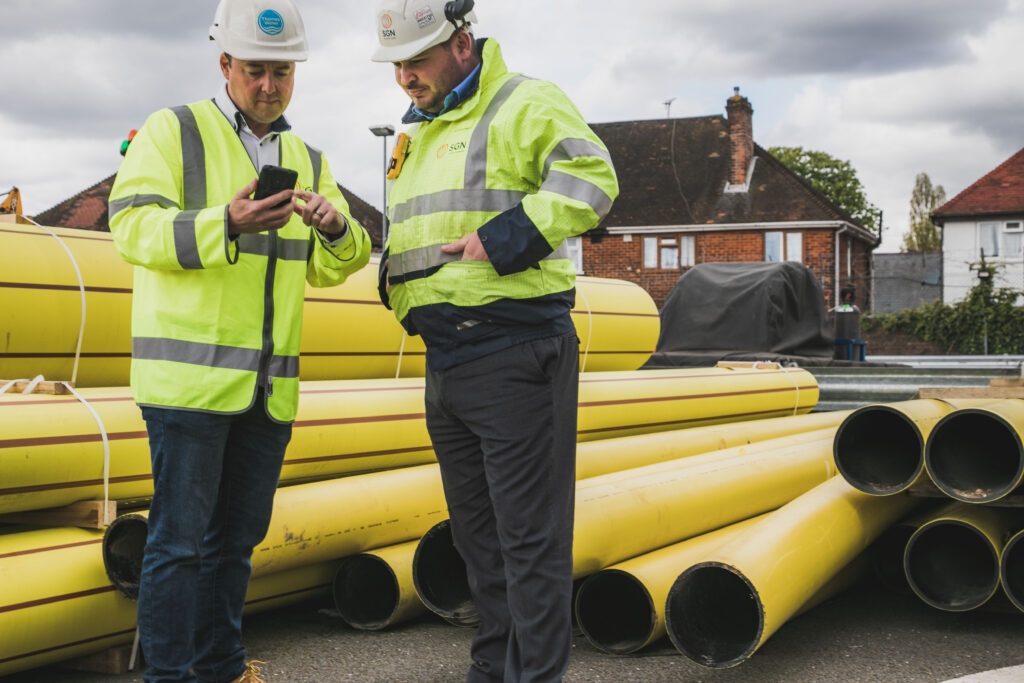AI transforming water industry: where are you on your digitisation journey? – part three
By Shelley Copsey, CEO at FYLD
In the final instalment of this series, I tackle the third stage of digitising operations for the water sector, and how this affects the safety, productivity and compliance of workers and organisations.
Read on to discover how true digitisation can be achieved in a simple, AI-driven way for the water industry…
Customers at stage three – digitisation as the new way of running your business
There are few water utilities that have truly reached stage three of digitisation, where technology is a key enabler and integrated into organisational strategy, and are familiar with using AI to drive business analytics and processes. But there are a high number of water utilities who have emerging ambition to reach this stage.
At FYLD, we have found that generative AI (GenAI) in particular is helping water utility executives understand in depth – and rapidly – the promise of AI to the organisations they lead.
Customers at stage three of digitisation have centralised data platforms, with deep integrations between core operational systems, eliminating data silos. These platforms enable a bi-directional flow of information, both through operational processes (from the field to remote management, and vice versa) and across functions (from field workforce team stakeholders or finance, to sustainability functions).
The customers we see in this space have line of sight to a much larger productivity dividend than the typical 8-12% gain a FYLD deployment will achieve in around six weeks. They see benefits such as:
- Supply chain connectivity, where their own crews and those deployed in their supply chain are operating on the same platform. This enables mixed crew (employees, embedded contractors, outsourced crews and specialist contractors) to work seamlessly on a single job, with a shared view of job progress and communications. For outsourced supply chains, it is enabling real time permissioning of job changes and analytics of supply chain performance;
- An ability to not only see what is currently happening (reactive to proactive management), and the real time recommendations about where to focus attention, but to begin to predict how the operations that day/month/quarter and beyond will play out, and deliberately design interventions to ensure more work is delivered and network operations are efficient;

- A real vision of every field worker going home safely everyday, one which UK’s energy regulator is supporting through the FYLD Predictive Safety Interventions program (OFGEM funded to £1.6m to date); and
- A highly engaged workforce through cultural change. FYLD supports a coaching and proactive intervention way of working. This is a major shift from today’s typical scenario of something going wrong on site and fear of consequences or retribution.
Customers in this stage of digitisation truly understand how GenAI can drive previously unavailable operational dividends. From end of month rapid insight into operational outcomes and areas of focus on, to surfacing the right piece of process information to the field worker just when they need it (without the extra 285 pages of the process that they don’t need), organisations at stage three are already experimenting with this game changing technology.
Economic conditions and labour shortages are causing every water utility to reassess their progress towards being a truly digital organisation. Importantly, this process does not need to be linear – simple, user centric platforms like FYLD enable water utilities to accelerate their journey without needing big, expensive and slow software system deployments like a new ERP or CRM.
In considering how to leapfrog along the digitisation journey, my recommendation is that water utility executives consider:
- The field worker experience. If the experience is poor, field workers (potentially en masse) will reject new platforms and tools. Like executives, field workers live in a world of connectivity, or apps that are designed to be easy to use, of immediacy of outcome. For a platform to be effective, it needs to align to the great experience we typically get with consumer apps;
- Speed to ROI. Products and projects should – at longest – deliver in-year ROI. Gone are the days of extensive project plans spanning multiple years and extensive classroom training; and
- Partnerships provide access to product, skill and inspirational roadmap that can be difficult to achieve within the walls of your own company. A tight partnership with the right AI-driven field workforce software platform company enables you the ability to have input into a product roadmap, as well as a chance to drive some change in your own organisational culture by the thinking that partner will offer for future ways of working.
I urge water utilities to prioritise taking more meaningful steps forward, at pace, and be forgiving of themselves that some things will go wrong – knowing that, very quickly, a lot of things will start to go right as the dividends of digitisation begin to flow.You can read my thoughts on transforming the water sector with AI in the other blogs in this series – part one and part two.















